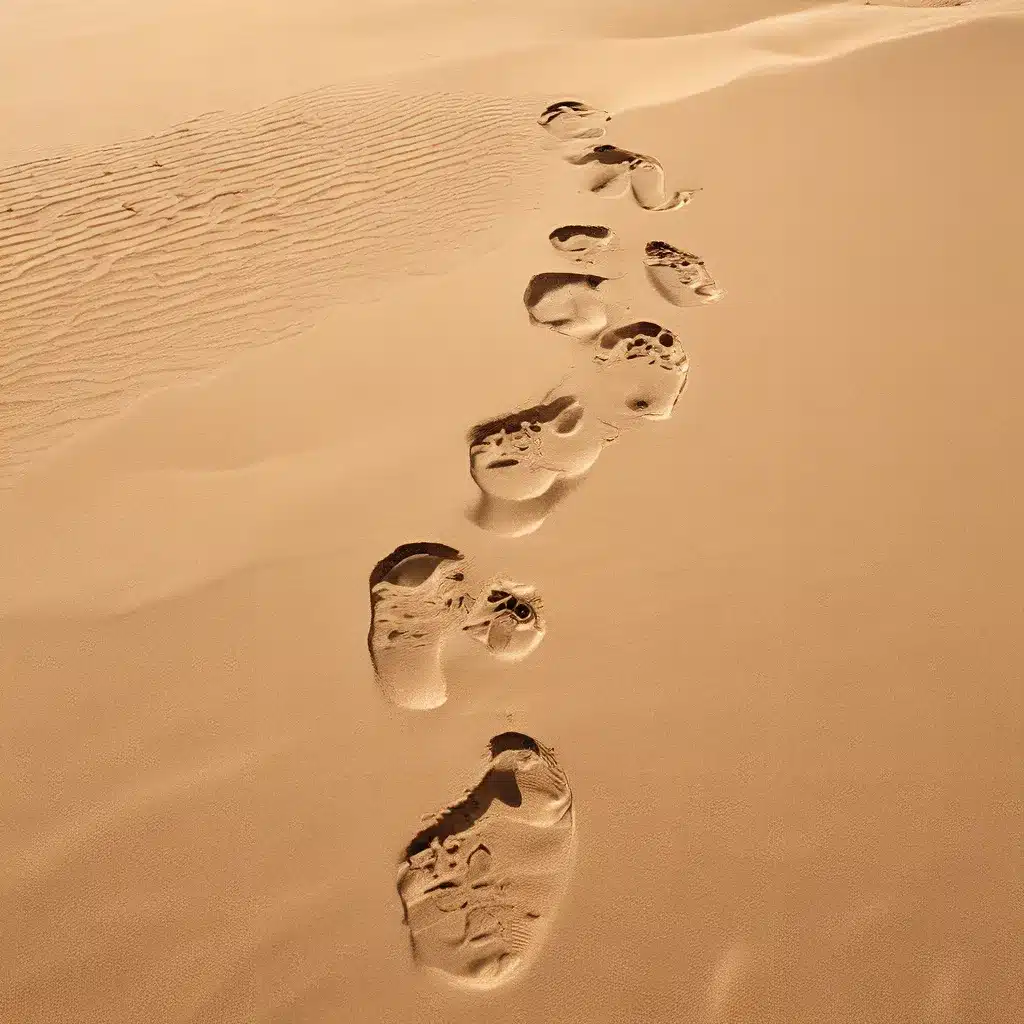
Unlocking the Mysteries of the Past: Uncovering the Secrets of Ancient Civilizations
The vast and diverse landscapes of our planet have long been the canvas upon which the stories of our ancestors have been etched. From the towering peaks of the Himalayas to the sweeping deserts of the American Southwest, the fossilized footprints and archaeological treasures scattered across the globe serve as tangible links to the rich tapestry of human history.
One such captivating chapter in this grand narrative can be found in the Tularosa Basin of New Mexico, where the White Sands National Park stands as a testament to the resilience and adaptability of the ancient peoples who once called this region home. Here, the shifting dunes of white gypsum have preserved the footprints of those who walked these lands thousands of years ago, offering a glimpse into the daily lives and movements of our distant ancestors.
Echoes of the Ice Age: Revealing the Secrets of Lake Otero
During the Ice Age, the Tularosa Basin was a vastly different landscape, with the Lake Otero serving as a lush, verdant oasis amidst the surrounding grasslands. Tens of thousands of years ago, this ancient lake would have been a hub of activity, attracting a diverse array of megafauna, including ancient camels, Columbian mammoths, and the Harlan’s ground sloth. These plant-eaters would have come to the lake to feast on the abundant grasses and trees, drawing the attention of fearsome predators such as the dire wolf and the American lion.
As the climate shifted and the lake eventually dried up, the footprints of these ancient creatures were preserved in the sediments, creating a fossilized record of their presence and the vibrant ecosystem that once thrived in this region. Today, scientists continue to uncover new evidence of this past life, piecing together the intricate tapestry of the Tularosa Basin’s ecological history.
The Footprints of the Past: A Window into Ancient Lifeways
But the footprints found in the White Sands National Park are not just the remnants of ancient megafauna. Researchers have discovered a wealth of human footprints scattered across the park, offering a unique and valuable glimpse into the daily lives and movements of the prehistoric inhabitants of this region. These fossilized footprints provide a tangible connection to the ancient peoples who traversed these lands, allowing us to better understand their hunting and gathering practices, their social structures, and their migratory patterns.
By carefully studying the size, depth, and distribution of these footprints, scientists are able to glean insights into the stature, gait, and physical capabilities of the ancient humans who left their mark on this landscape. Moreover, the diversity of the footprints, ranging from adults to children, suggests that these prehistoric communities were highly mobile and adaptable, able to thrive in the challenging environment of the Tularosa Basin.
Unraveling the Threads of History: Analyzing Ancient Artifacts and Remains
Alongside the fossilized footprints, the Tularosa Basin has also yielded a wealth of archaeological artifacts that offer even deeper insights into the lives and cultures of its ancient inhabitants. From intricate stone tools and pottery fragments to bone fragments and rock art, these relics of the past provide a tangible connection to the daily routines, artistic expressions, and spiritual beliefs of the people who called this region home.
By meticulously studying these artifacts, archaeologists and anthropologists are able to piece together a more comprehensive understanding of the social, economic, and technological developments that shaped the lives of the prehistoric peoples of the Tularosa Basin. The analysis of bone fragments, for example, can reveal information about the dietary habits and nutritional status of these ancient communities, while rock art and pottery designs offer insights into their cultural symbolism and artistic traditions.
Emerging Theories and Ongoing Discoveries: Shaping Our Understanding of the Past
As the exploration of the Tularosa Basin continues, scientists are constantly uncovering new evidence and theories that challenge and refine our understanding of the ancient peoples who once thrived in this region. From the discovery of previously unknown species to the reinterpretation of existing archaeological data, the footprints and artifacts found in the White Sands National Park continue to captivate and inspire researchers from around the world.
One of the most significant developments in recent years has been the dating of the human footprints found in the Tularosa Basin, which have been carbon-dated to over 10,000 years old. This groundbreaking discovery has challenged long-held assumptions about the timing and patterns of human migration into the Americas, opening up new avenues of research and debate within the scholarly community.
As we continue to unravel the mysteries of the past, the footprints and artifacts found in the Tularosa Basin serve as a powerful reminder of the resilience, ingenuity, and adaptability of the ancient peoples who once called this region home. Through careful analysis and ongoing exploration, we are able to glimpse the rich tapestry of human history, and to better understand the profound impact that these ancient civilizations have had on the world we inhabit today.


